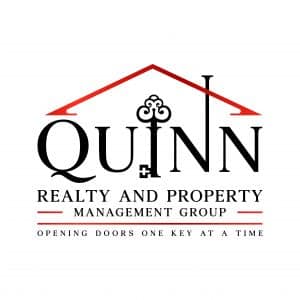Discover Quinn Realty and Property Management Excellence Today
Optimizing Residential Or Commercial Property Management Operations for Long-Term Productivity and Renter Retention

Effective Interaction Methods
Reliable interaction is vital in maximizing home management procedures. Effective and clear communication ensures that all stakeholders, consisting of residential property owners, tenants, upkeep personnel, and monitoring, get on the same web page, resulting in smoother procedures and boosted renter satisfaction. One critical element of efficient interaction is setting clear assumptions from the start. Building managers need to clearly lay out lease terms, upkeep treatments, and communication networks to avoid misconceptions down the line.
Using modern technology can also considerably boost communication efficiency in residential property monitoring. Executing residential property monitoring software that enables for real-time updates, automated notices, and very easy documents can simplify communication processes and improve overall operational effectiveness. Additionally, routine communication with different channels such as email, call, and in-person conferences can assist cultivate favorable relationships with lessees and deal with any kind of concerns quickly.
Modern Technology Integration for Upkeep
In the realm of property management optimization, a crucial part that enhances operational effectiveness and maintenance procedures is the assimilation of modern technology for improving maintenance tasks. By integrating technology into upkeep operations, residential property managers can take advantage of improved job order monitoring, positive maintenance scheduling, and boosted communication with maintenance groups and occupants.
One considerable advantage of modern technology assimilation in maintenance is the ability to systematize work orders and track upkeep demands digitally. This streamlines the procedure of receiving, appointing, and finishing maintenance jobs, resulting in quicker response times and raised renter complete satisfaction. Predictive upkeep technologies can aid in identifying possible concerns prior to they escalate, reducing the likelihood of costly repair work and reducing downtime.

Data-Driven Decision Making
Using data-driven insights encourages home managers to make educated decisions that enhance operational effectiveness and take full advantage of asset efficiency. Quinn Realty and Property Management. By leveraging data analytics tools and technologies, residential property managers can draw out beneficial info from numerous sources such as occupant feedback, maintenance documents, and market trends. This data can give important understandings into renter choices, operational bottlenecks, and cost-saving possibilities
Data-driven decision-making enables property supervisors to determine patterns and that site trends that might not appear through standard observation. For instance, evaluating maintenance data may expose repeating issues in certain systems, enabling managers to proactively resolve underlying troubles and stop future pricey repair work. Furthermore, by keeping track of tenant satisfaction metrics and lease renewal prices, residential property supervisors can tailor their services to fulfill tenant assumptions, eventually boosting tenant retention and lasting success.
Additionally, data-driven understandings can also inform tactical financial investment decisions by highlighting areas for enhancement or growth based on market demand and performance metrics. Overall, incorporating data-driven decision-making processes into home administration procedures can result in more reliable source allowance, improved tenant complete satisfaction, and enhanced productivity in the future.
Lessee Fulfillment Campaigns
Attracting understandings from data-driven decision-making, residential or commercial property supervisors can apply targeted tenant satisfaction efforts to enhance total leasing experiences and foster long-lasting renter relationships. By comprehending occupant preferences and pain factors, property supervisors can customize their solutions to satisfy the details needs of their occupants, ultimately bring about higher complete satisfaction degrees and boosted occupant retention rates.
One effective tenant complete satisfaction initiative is to establish clear lines of interaction with tenants to deal with any kind of issues promptly. Regular feedback surveys can also supply important insights into lessee complete satisfaction degrees and areas for improvement. Residential or commercial property managers can use this feedback to make needed modifications and show tenants that their point of views are valued.

Additionally, organizing neighborhood occasions and features that deal with the passions of renters can produce a sense of belonging and enhance overall fulfillment. By cultivating a interesting and favorable area atmosphere, residential property supervisors can reinforce occupant relationships and urge long-lasting leases, inevitably enhancing productivity and tenant retention in the lengthy run.
Improving Functional Processes
Efficiency is extremely important in residential or commercial property monitoring, necessitating the optimization of operational processes to enhance performance and take full advantage of sources. Improving functional processes involves recognizing areas for improvement, removing redundancies, and applying systems that improve overall efficiency. One key aspect of streamlining operational processes is the integration of innovation services such as building monitoring software, which can automate tasks, simplify communication, and supply real-time data insights. By digitizing procedures like maintenance demands, rent collection, and lease revivals, home managers can save useful reference time, reduce errors, and improve occupant fulfillment.
Moreover, executing standardized procedures and process can help create consistency across buildings, reduce confusion, and streamline day-to-day operations. Routinely examining and enhancing these processes is necessary to adjust to altering market problems, occupant requirements, and regulative demands. By continuously seeking ways to streamline functional procedures, building supervisors can not only enhance their own efficiency but additionally supply much better services to renters, ultimately leading to lasting productivity and occupant retention.
Final Thought
To conclude, optimizing property monitoring operations through reliable interaction, innovation integration, data-driven choice making, tenant contentment efforts, and improving procedures is necessary for long-lasting profitability and occupant retention. By executing these strategies, building supervisors can boost functional performance, minimize costs, and boost renter satisfaction, eventually resulting in raised success and lessee loyalty. It is crucial websites for building management firms to continuously examine and adjust their operations to fulfill the developing demands of both tenants and the market.
Clear and reliable interaction ensures that all stakeholders, including building owners, renters, upkeep personnel, and monitoring, are on the same page, leading to smoother operations and raised tenant satisfaction - Quinn Realty and Property Management. By keeping an eye on lessee complete satisfaction metrics and lease renewal prices, property managers can tailor their services to satisfy occupant assumptions, inevitably improving tenant retention and long-lasting earnings
By continually looking for means to simplify functional procedures, property managers can not only increase their own efficiency but also deliver better services to tenants, ultimately leading to long-term profitability and tenant retention.
In conclusion, optimizing residential or commercial property management operations through reliable interaction, modern technology assimilation, data-driven choice making, renter complete satisfaction initiatives, and streamlining procedures is crucial for lasting earnings and occupant retention (Quinn Realty and Property Management). By executing these techniques, residential or commercial property supervisors can boost operational efficiency, reduce expenses, and improve tenant satisfaction, inevitably leading to enhanced success and occupant loyalty